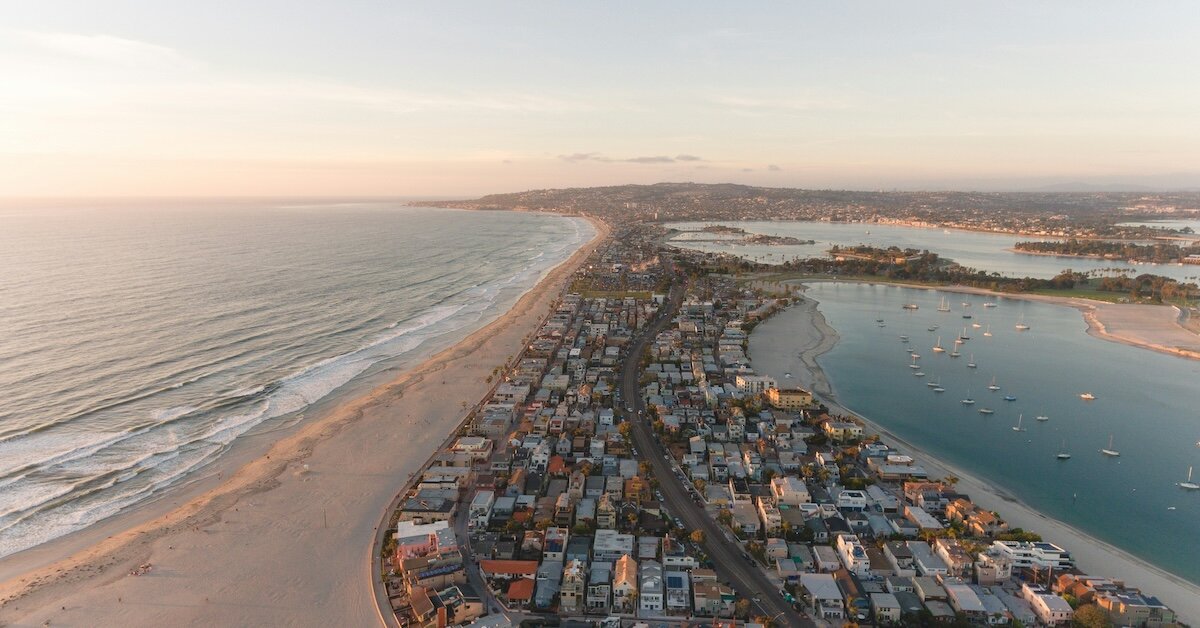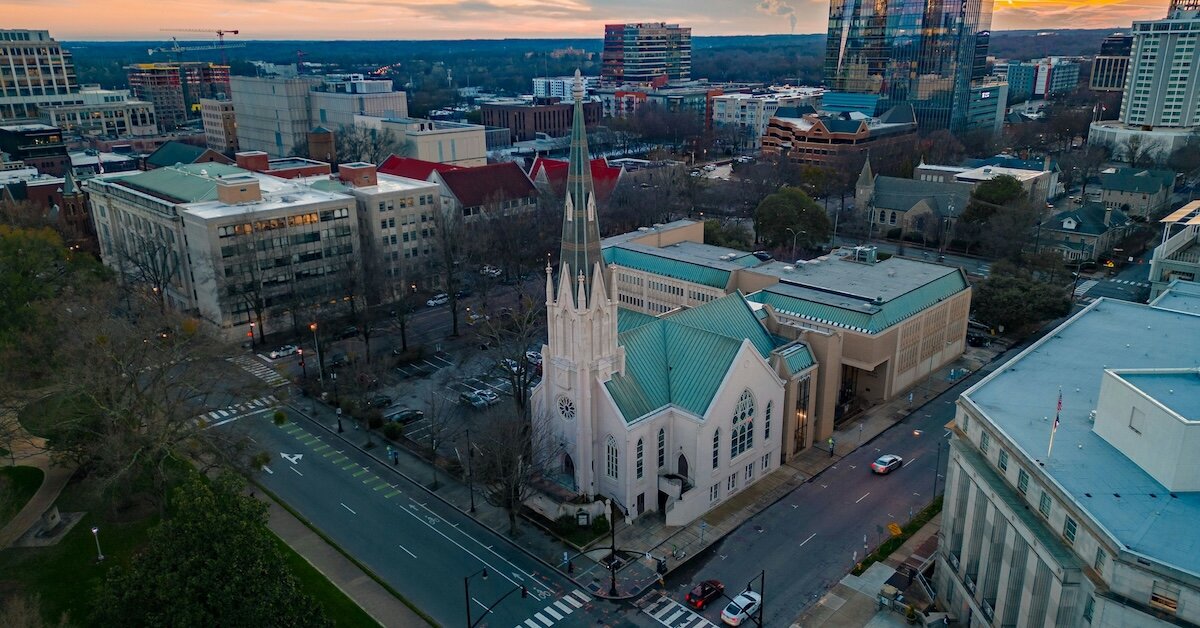The Best Cities to Buy Multifamily Property in 2025

July 22, 2025

In 2025, the multifamily market is being pulled in two directions. High interest rates and tight lending have slowed transactions. At the same time. affordability challenges remain front and center for renters. Cities with too much new supply are seeing rents flatten or even fall, but markets with limited construction still have steady rent growth.
Over the next year, a slowdown in new deliveries could help stabilize high-supply metros, opening the door for a rebound. At the same time, affordability pressures remain a national concern. Rising housing costs have kept the spotlight on the need for more moderately priced options. However, high construction expenses and political hurdles continue to limit progress.
For investors, opportunity lies in cities with population growth, strong job creation, and resilient rental demand. Using insights from PwC’s Emerging Trends in Real Estate 2025 and Crexi Intelligence, we’ve highlighted the top cities for multifamily real estate in 2025.
10 Top Cities for Multifamily Investing in 2025
Keep reading to see which U.S. cities stand out as the best urban markets for multifamily investing in 2025. For each market, we’ll look at the outlook, key trends, and investment opportunities.
Demographic data is from CensusReporter.org and DataUSA.io, while rent and occupancy numbers come from Zumper.com (based on 1-bedroom units unless noted). Pricing and comps are provided by Crexi Intelligence.

1. Chicago
Chicago holds its place as one of the top cities with strong multifamily real estate markets in 2025. The region offers a rare balance of size, stability, and affordability. With nearly 2.7 million residents, the city has one of the largest renter bases in the country. Its role as a hub for transportation, healthcare, and finance only add to its appeal
Rents remain attractive for both renters and investors. The median one-bedroom sits at $2,095 at the midpoint of 2025. This is about 31% higher than the U.S. average, but well below major cities like New York or San Francisco. Even with rents down 9% year-over-year, Chicago has strong cash flow potential.
The labor market shows mixed signals. Losses in professional services and manufacturing point to longer-term headwinds. Still, major employers in health care, higher education, and logistics help anchor demand.
From an investment perspective, conditions are favorable. New apartment supply has slowed, keeping occupancy above historical averages. For some investors, especially those looking at stable cash flow structures like triple net leases, the Chicago market offers room to diversify without sacrificing tenant demand.
Crexi Intelligence Chicago Multifamily Trends
For Sale (active)
- Median asking price: $589,600
- Price/SqFt: $167
- Asking cap rate: 7.7%
- Days on market: 50
- Total listings on Crexi: 1,008
Sales Comps (past 12 months)
- Median sold price: $400,700
- Sold price/SqFt: $105
- Sold price/unit: $187,500
- Total sales volume: $8.3 billion
- Sold cap rate: 9.3%
- Total SqFt sold: 129.4 million
- Days on market (median): 186

2. San Diego
In 2025, San Diego remains one of the top cities for long-term multifamily growth. This is largely thanks to its mix of strong demand, limited supply, and lifestyle appeal. Nearly 1.4 million people call the city home, and demand for rentals stays high as new construction struggles to keep up with geographic and zoning limits.
Rents average $2,277 for a one-bedroom, about 42% higher than the national average. While that’s down 5% from last year, it still reflects the city’s status as one of the top apartment rental markets in 2025. For investors, it means consistent cash flow potential even as tenants face affordability challenges.
The job market is mixed. San Diego County’s unemployment rate hit 5.2% in July 2025, higher than both the state and national averages. Healthcare continues to drive growth, adding more than 13,000 jobs year-over-year. Professional services and manufacturing have slowed down. Defense, biotech, and tourism remain core pillars of the local economy, providing stability.
From an investment standpoint, new supply is slowing, helping occupancy stay strong. Cap rates are stabilizing, and investors focused on long-term appreciation continue to target markets like San Diego. Ultimately, San Diego’s coastal location and high quality of life make it one of the multifamily property hotspots for 2025.
Crexi Intelligence San Diego Multifamily Trends
For Sale (active)
- Median asking price: $2.9 million
- Price/SqFt: $567
- Asking cap rate: 4.8%
- Days on market: 90
- Total listings on Crexi: 132
Sales Comps (past 12 months)
- Median sold price: $825,000
- Sold price/SqFt: $636
- Sold price/unit: $665,000
- Total sales volume: $4.9 billion
- Sold cap rate: 4.5%
- Total SqFt sold: 8.8 million
- Days on market (median): 133

3. Columbus
Columbus continues to be one of the most profitable cities for multifamily investment in 2025. The area stands out for its affordability and steady demand. It now has nearly 910,000 residents, making it Ohio’s largest city and one of the fastest-growing metros in the Midwest. Population growth and a diverse economy supports a wide renter base that ranges from students at Ohio State University to young professionals and families.
Rents in Columbus remain accessible. This helps keep occupancy rates stable. The median rent for a one-bedroom apartment is $1,209, about 24% lower than the national average and down 3% from last year. For investors, this pricing balance offers reliable cash flow while still leaving room for long-term growth.
The local job market is mixed. Ohio reported weaker job creation in late 2024 and early 2025. Data shows private-sector losses in manufacturing and professional services. Still, healthcare, education, and government remain strong anchors for employment. Also, ongoing investments in technology and logistics hubs are adding new opportunities.
From an investment perspective, Columbus appeals to those focused on cash flow over appreciation. New construction has slowed, which should help vacancy rates remain low. With affordability working in its favor, Columbus is drawing renters from more expensive cities.
Multifamily investors can expect Columbus to deliver consistent demand and competitive yields. Going forward, it will remain among the Midwest’s most stable markets for 2025.
Crexi Intelligence Columbus Multifamily Trends
For Sale (active)
- Median asking price: $419,900
- Price/SqFt: $157
- Asking cap rate: 7.8%
- Days on market: 141
- Total listings on Crexi: 407
Sales Comps (past 12 months)
- Median sold price: $265,600
- Sold price/SqFt: $189
- Sold price/unit: $215,100
- Total sales volume: $121.3 billion
- Sold cap rate: 5.5%
- Total SqFt sold: 8.4 million
- Days on market (median): 109

4. Nashville
Nashville continues to shine as one of the best urban markets for multifamily investing in 2025. The metro’s population has grown past 2.1 million, fueled by its reputation as a cultural and economic hub. For renters, the appeal is clear. Nashville has a great music scene, growing job base, and relative affordability compared to other large cities.
The job market is a key driver in the city’s growth. A recent report ranked Nashville among the top places to work in the country. Healthcare, education, and tech remain pillars of the economy. Ongoing business expansions continue to attract both workers and entrepreneurs. This creates a broad tenant pool of young professionals, families, and remote workers.
Rental demand is holding firm. The median rent for a one-bedroom is $1,730, 8% above the national average and up slightly from last year. Construction starts are slowing, down more than 40% year-over-year. This should ease supply pressures and help occupancy stabilize. Investors are already taking notice, with transaction volume up sharply in early 2025.
Looking ahead, Nashville is best suited for investors focused on long-term appreciation rather than short-term cash flow. For groups raising capital through structures such as real estate syndication, Nashville’s growth story is a major selling point.
Crexi Intelligence Nashville Multifamily Trends
For Sale (active)
- Median asking price: $2 million
- Price/SqFt: $456
- Asking cap rate: 7%
- Days on market: 98
- Total listings on Crexi: 42
Sales Comps (past 12 months)
- Median sold price: $402,200
- Sold price/SqFt: $311
- Sold price/unit: $166,700
- Total sales volume: $4.6 billion
- Total SqFt sold: 11 million
- Days on market (median): 136

5. Raleigh
Raleigh is one of the emerging cities for multifamily real estate investors in 2025. As part of the Research Triangle, it benefits from world-class universities, a growing tech and life sciences presence, and a steady stream of new residents. The city’s population now tops 482,000, with consistent annual growth driven by job opportunities and quality of life.
As of August 2025, unemployment in Raleigh–Cary was just 3.2%, well below the national average. Recently, major announcements reinforced its reputation as a hub for biotech and pharmaceuticals. Genentech is investing $700 million in a new facility, and Amgen is expanding with $1.5 billion in projects. FUJIFILM Diosynth is ramping up biologics production under a $3 billion deal with Regeneron. These expansions create high-paying jobs and long-term demand for housing.
For renters, Raleigh remains relatively affordable compared to many metros. The median one-bedroom rent is $1,292. This is 19% below the national average and has held relatively steady year-over-year. Around 49% of housing units are renter-occupied, promising plenty of tenants for investors.
Raleigh offers a balanced play for investors going forward. Today, Raleigh is positioned as one of the top-performing cities for rental property investments in the Southeast.
Crexi Intelligence Raleigh Multifamily Trends
For Sale (active)
- Median asking price: $1.5 million
- Price/SqFt: $402
- Asking cap rate 3.8%
- Days on market: 123
- Total listings on Crexi: 8
Sales Comps (past 12 months)
- Median sold price: $395,500
- Sold price/SqFt: $243
- Sold price/unit: $375,200
- Total sales volume: $1.1 billion
- Total SqFt sold: 3.9 million

6. Boston
Boston remains one of the best cities for multifamily investors in 2025. The area is supported by strong rental demand, a diverse economy, and steady policies for new housing. The city’s population is now more than 652,000, and its role as a hub for healthcare, education, and technology continues to attract a highly skilled tenant base.
Rents in Boston remain some of the highest in the country. The median rent for a one-bedroom is $2,850, 78% higher than the national average and up 1% from last year. Occupancy is healthy as well, with vacancy holding far below pandemic highs.
Boston’s labor market has softened slightly. Unemployment reached 4.2% in January, up from 3.9% in late 2024. Healthcare remains a bright spot, with hospitals and ambulatory care showing more than 15% growth in job postings. At the same time, job postings for computer occupations remain below historic averages. This reflects shifting dynamics in Boston’s tech sector. Still, the metro continues to attract new investment in life sciences, education, and research, keeping its long-term outlook resilient.
Construction has slowed to a 10-year low, which should support rent growth and stabilize cap rates in the near term. Beyond 2025, Boston offers investors steady returns, backed by one of the strongest multifamily real estate markets in the Northeast.
Crexi Intelligence Boston Multifamily Trends
For Sale (active)
- Median asking price: $2.6million
- Price/SqFt: $554
- Asking cap rate: 6.2%
- Days on market: 74
- Total listings on Crexi: 39
Sales Comps (past 12 months)
- Median sold price: $890,400
- Sold price/SqFt: $496
- Sold price/unit: $422,100
- Total sales volume: $2.3 billion
- Sold cap rate: 6.3%
- Total SqFt sold: 6 million
- Days on market (median): 156

7. Dallas
Dallas continues to stand out as one of the most profitable cities for multifamily investment in 2025. The city’s population has topped 1.3 million, largely thanks to its role as a business and logistics hub. A diverse economy supports this growth. Education, health services, and trade have added more than 23,000 jobs in the past year. Unemployment sits at just 3.5%, lower than both Texas and the national average, giving Dallas one of the stronger labor markets among major metros.
Rents remain accessible compared to coastal cities. The median rent for a one-bedroom apartment is $1,375 - 14% below the national average, even after a 1% dip from last year. This affordability keeps demand high, particularly among young professionals and families seeking lower living costs without sacrificing big-city amenities.
The investment outlook for Dallas is shaped by supply pressure. Deliveries remain elevated. However, new starts are slowing, which should help stabilize occupancy and cap rates in the months ahead.
In the future, Dallas is expected to remain a strong cash flow market. Overall, long-term fundamentals keep Dallas firmly on the list of top cities for multifamily real estate in 2025.
Crexi Intelligence Dallas Multifamily Trends
For Sale (active)
- Median asking price: $2.1 million
- Price/SqFt: $208
- Asking cap rate: 6.6%
- Days on market: 103
- Total listings on Crexi: 76
Sales Comps (past 12 months)
- Median sold price: $798,000
- Sold price/SqFt: $218
- Sold price/unit: $363,100
- Sold cap rate: 3.4%
- Total sales volume: $4 billion
- Total SqFt sold: 18.5 million

8. San Jose
At the heart of Silicon Valley, San Jose is easily among top-performing cities for rental property investments. With nearly 970,000 residents and demand driven by the tech and AI industries, the city continues to see strong rental pressure. Vacancy rates sit low, and rents remain among the highest in the nation. The median rent for a one-bedroom is $2,737. Currently, rent is 71% above the national average and holding steady year-over-year.
The local economy is anchored by some of the world’s largest technology firms, along with new investments in advanced manufacturing and biotech. While unemployment has ticked up slightly to 4.9%, it still outperforms California as a whole. Limited single-family supply keeps renters in the multifamily market, from young tech workers to long-term professionals.
For investors, San Jose continues to be an appreciation play. New supply is slowing after a busy 2024, while demand has stayed resilient. This has pushed occupancy to 96% in stabilized properties. Cap rates remain tight, reflecting investor confidence in long-term rent growth.
San Jose is expected to stay a high-barrier, high-reward market going forward. Multifamily investors who prioritize appreciation and stability will continue to view it as one of the most competitive markets on the West Coast.
Crexi Intelligence San Jose Multifamily Trends
For Sale (active)
- Median asking price: $2.7 million
- Price/SqFt: $487
- Asking cap rate: 5.0%
- Days on market: 80
- Total listings on Crexi: 39
Sales Comps (past 12 months)
- Median sold price: $1 million
- Sold price/SqFt: $569
- Sold price/unit: $452,000
- Total sales volume: $2.4 billion
- Sold cap rate: 4.9%
- Total SqFt sold: 2.9 million
- Days on market (median): 62

9. Philadelphia
Philadelphia is home to a thriving population of over 1.5 million. With a diverse renter base that includes students, young professionals, and families, rental demand remains steady. Median rent for a one-bedroom now sits at $1,500. This is about 6% lower than the national average, keeping the city affordable compared to many major metros.
The job market shows modest improvement, with unemployment dipping to 4.7% this spring. Education and health services still dominate hiring. Trade and transportation have seen notable wage growth. These sectors, combined with Philadelphia’s universities and healthcare systems, provide a stable base of renters.
Multifamily fundamentals remain strong. Occupancy in stabilized assets is holding near 95.5%, even after a wave of new supply in 2024. Investors are focusing on cash flow opportunities, attracted by lower entry costs and competitive rental yields. For those building long-term wealth, Philadelphia stands out as a large-market option among the best cities for passive multifamily investing.
Philadelphia’s mix of affordability, steady employment, and resilient rental demand positions it well for the rest of 2025. For investors seeking reliable income in a large urban market, it stands out as a balanced and dependable choice.
Crexi Intelligence Philadelphia Multifamily Trends
For Sale (active)
- Median asking price: $1 million
- Price/SqFt: $228
- Asking cap rate: 7%
- Days on market: 122
- Total listings on Crexi: 255
Sales Comps (past 12 months)
- Median sold price: $220,500
- Sold price/SqFt: $167
- Sold price/unit: $217,900
- Total sales volume: $2 billion
- Sold cap rate: 7.4%
- Total SqFt sold: 13.1 million
- Days on market (median): 250

10. Twin Cities (Minneapolis/St. Paul)
The Twin Cities is one of the best metro areas for multifamily real estate, offering stability and long-term growth potential. With a metro population topping 3.2 million, Minneapolis–St. Paul has a large renter base. Education and health services continue to drive job growth, and the region’s unemployment rate of 3.5% sits well below the national average.
The local economy is supported by major employers, from healthcare giants to growing logistics hubs. A recent example: Amazon’s $53 million purchase in Eagan points to ongoing investment and redevelopment momentum. This diverse economy supports steady housing demand, even as some sectors face pressure.
For investors, rents here remain moderate, making cash flow easier to capture. Cap rates are also holding relatively firm. New supply is limited compared to peak years, giving landlords more leverage.
Through 2025, the Twin Cities are expected to see slow but steady growth. For investors hoping for reliable returns in a large, balanced market, Minneapolis–St. Paul is a safe choice among Midwest metros.
Crexi Intelligence Minneapolis Multifamily Trends
For Sale (active)
- Median asking price: $789,000
- Price/SqFt: $145
- Asking cap rate: 7%
- Days on market: 104
- Total listings on Crexi: 39
Sales Comps (past 12 months)
- Median sold price: $241,000
- Sold price/SqFt: $16
- Sold price/unit: $118,300
- Total sales volume: $179.6 million
- Sold cap rate: 6.3%
- Total SqFt sold: 10.5 million
- Days on market (median): 138
Crexi Intelligence St. Paul Multifamily Trends
For Sale (active)
- Median asking price: $849,000
- Price/SqFt: $113
- Asking cap rate: 6.8%
- Days on market: 57
- Total listings on Crexi: 31
Sales Comps (past 12 months)
- Median sold price: $285,000
- Sold price/SqFt: $201
- Sold price/unit: $266,100
- Total sales volume: $1.9 billion
- Sold cap rate: 6.6%
- Total SqFt sold: 9.6 million
- Days on market (median): 168
Why These Cities Stand Out in 2025
From coast to coast, the top cities for multifamily investing this year share some clear strengths.
Each has a growing population and a diverse economy that creates steady demand for housing. Occupancy rates remain high or stable, even as new supply comes online. Many of these markets are showing rent resilience, with steady growth or quick rebounds despite delivery headwinds. For investors, cap rates and yields strike a balance, offering both reliable cash flow and room for long-term appreciation.
How Investors Can Use Crexi Intelligence for Market Research
Making smart choices in today’s market comes down to data. Crexi Intelligence gives investors real-time access to comps, rent data, cap rates, and sales history at both the city and property level. You can filter by geography, property type, NOI, and dozens of other factors to validate where these top markets fit your strategy.
With over 153 million verified comps and intuitive tools, Crexi helps investors cut through noise and focus on the opportunities that matter most.
Get more multifamily property data at your fingertips with Crexi Intelligence.
The Best Cities to Buy Multifamily Property in 2025

July 22, 2025

In 2025, the multifamily market is being pulled in two directions. High interest rates and tight lending have slowed transactions. At the same time. affordability challenges remain front and center for renters. Cities with too much new supply are seeing rents flatten or even fall, but markets with limited construction still have steady rent growth.
Over the next year, a slowdown in new deliveries could help stabilize high-supply metros, opening the door for a rebound. At the same time, affordability pressures remain a national concern. Rising housing costs have kept the spotlight on the need for more moderately priced options. However, high construction expenses and political hurdles continue to limit progress.
For investors, opportunity lies in cities with population growth, strong job creation, and resilient rental demand. Using insights from PwC’s Emerging Trends in Real Estate 2025 and Crexi Intelligence, we’ve highlighted the top cities for multifamily real estate in 2025.
10 Top Cities for Multifamily Investing in 2025
Keep reading to see which U.S. cities stand out as the best urban markets for multifamily investing in 2025. For each market, we’ll look at the outlook, key trends, and investment opportunities.
Demographic data is from CensusReporter.org and DataUSA.io, while rent and occupancy numbers come from Zumper.com (based on 1-bedroom units unless noted). Pricing and comps are provided by Crexi Intelligence.

1. Chicago
Chicago holds its place as one of the top cities with strong multifamily real estate markets in 2025. The region offers a rare balance of size, stability, and affordability. With nearly 2.7 million residents, the city has one of the largest renter bases in the country. Its role as a hub for transportation, healthcare, and finance only add to its appeal
Rents remain attractive for both renters and investors. The median one-bedroom sits at $2,095 at the midpoint of 2025. This is about 31% higher than the U.S. average, but well below major cities like New York or San Francisco. Even with rents down 9% year-over-year, Chicago has strong cash flow potential.
The labor market shows mixed signals. Losses in professional services and manufacturing point to longer-term headwinds. Still, major employers in health care, higher education, and logistics help anchor demand.
From an investment perspective, conditions are favorable. New apartment supply has slowed, keeping occupancy above historical averages. For some investors, especially those looking at stable cash flow structures like triple net leases, the Chicago market offers room to diversify without sacrificing tenant demand.
Crexi Intelligence Chicago Multifamily Trends
For Sale (active)
- Median asking price: $589,600
- Price/SqFt: $167
- Asking cap rate: 7.7%
- Days on market: 50
- Total listings on Crexi: 1,008
Sales Comps (past 12 months)
- Median sold price: $400,700
- Sold price/SqFt: $105
- Sold price/unit: $187,500
- Total sales volume: $8.3 billion
- Sold cap rate: 9.3%
- Total SqFt sold: 129.4 million
- Days on market (median): 186

2. San Diego
In 2025, San Diego remains one of the top cities for long-term multifamily growth. This is largely thanks to its mix of strong demand, limited supply, and lifestyle appeal. Nearly 1.4 million people call the city home, and demand for rentals stays high as new construction struggles to keep up with geographic and zoning limits.
Rents average $2,277 for a one-bedroom, about 42% higher than the national average. While that’s down 5% from last year, it still reflects the city’s status as one of the top apartment rental markets in 2025. For investors, it means consistent cash flow potential even as tenants face affordability challenges.
The job market is mixed. San Diego County’s unemployment rate hit 5.2% in July 2025, higher than both the state and national averages. Healthcare continues to drive growth, adding more than 13,000 jobs year-over-year. Professional services and manufacturing have slowed down. Defense, biotech, and tourism remain core pillars of the local economy, providing stability.
From an investment standpoint, new supply is slowing, helping occupancy stay strong. Cap rates are stabilizing, and investors focused on long-term appreciation continue to target markets like San Diego. Ultimately, San Diego’s coastal location and high quality of life make it one of the multifamily property hotspots for 2025.
Crexi Intelligence San Diego Multifamily Trends
For Sale (active)
- Median asking price: $2.9 million
- Price/SqFt: $567
- Asking cap rate: 4.8%
- Days on market: 90
- Total listings on Crexi: 132
Sales Comps (past 12 months)
- Median sold price: $825,000
- Sold price/SqFt: $636
- Sold price/unit: $665,000
- Total sales volume: $4.9 billion
- Sold cap rate: 4.5%
- Total SqFt sold: 8.8 million
- Days on market (median): 133

3. Columbus
Columbus continues to be one of the most profitable cities for multifamily investment in 2025. The area stands out for its affordability and steady demand. It now has nearly 910,000 residents, making it Ohio’s largest city and one of the fastest-growing metros in the Midwest. Population growth and a diverse economy supports a wide renter base that ranges from students at Ohio State University to young professionals and families.
Rents in Columbus remain accessible. This helps keep occupancy rates stable. The median rent for a one-bedroom apartment is $1,209, about 24% lower than the national average and down 3% from last year. For investors, this pricing balance offers reliable cash flow while still leaving room for long-term growth.
The local job market is mixed. Ohio reported weaker job creation in late 2024 and early 2025. Data shows private-sector losses in manufacturing and professional services. Still, healthcare, education, and government remain strong anchors for employment. Also, ongoing investments in technology and logistics hubs are adding new opportunities.
From an investment perspective, Columbus appeals to those focused on cash flow over appreciation. New construction has slowed, which should help vacancy rates remain low. With affordability working in its favor, Columbus is drawing renters from more expensive cities.
Multifamily investors can expect Columbus to deliver consistent demand and competitive yields. Going forward, it will remain among the Midwest’s most stable markets for 2025.
Crexi Intelligence Columbus Multifamily Trends
For Sale (active)
- Median asking price: $419,900
- Price/SqFt: $157
- Asking cap rate: 7.8%
- Days on market: 141
- Total listings on Crexi: 407
Sales Comps (past 12 months)
- Median sold price: $265,600
- Sold price/SqFt: $189
- Sold price/unit: $215,100
- Total sales volume: $121.3 billion
- Sold cap rate: 5.5%
- Total SqFt sold: 8.4 million
- Days on market (median): 109

4. Nashville
Nashville continues to shine as one of the best urban markets for multifamily investing in 2025. The metro’s population has grown past 2.1 million, fueled by its reputation as a cultural and economic hub. For renters, the appeal is clear. Nashville has a great music scene, growing job base, and relative affordability compared to other large cities.
The job market is a key driver in the city’s growth. A recent report ranked Nashville among the top places to work in the country. Healthcare, education, and tech remain pillars of the economy. Ongoing business expansions continue to attract both workers and entrepreneurs. This creates a broad tenant pool of young professionals, families, and remote workers.
Rental demand is holding firm. The median rent for a one-bedroom is $1,730, 8% above the national average and up slightly from last year. Construction starts are slowing, down more than 40% year-over-year. This should ease supply pressures and help occupancy stabilize. Investors are already taking notice, with transaction volume up sharply in early 2025.
Looking ahead, Nashville is best suited for investors focused on long-term appreciation rather than short-term cash flow. For groups raising capital through structures such as real estate syndication, Nashville’s growth story is a major selling point.
Crexi Intelligence Nashville Multifamily Trends
For Sale (active)
- Median asking price: $2 million
- Price/SqFt: $456
- Asking cap rate: 7%
- Days on market: 98
- Total listings on Crexi: 42
Sales Comps (past 12 months)
- Median sold price: $402,200
- Sold price/SqFt: $311
- Sold price/unit: $166,700
- Total sales volume: $4.6 billion
- Total SqFt sold: 11 million
- Days on market (median): 136

5. Raleigh
Raleigh is one of the emerging cities for multifamily real estate investors in 2025. As part of the Research Triangle, it benefits from world-class universities, a growing tech and life sciences presence, and a steady stream of new residents. The city’s population now tops 482,000, with consistent annual growth driven by job opportunities and quality of life.
As of August 2025, unemployment in Raleigh–Cary was just 3.2%, well below the national average. Recently, major announcements reinforced its reputation as a hub for biotech and pharmaceuticals. Genentech is investing $700 million in a new facility, and Amgen is expanding with $1.5 billion in projects. FUJIFILM Diosynth is ramping up biologics production under a $3 billion deal with Regeneron. These expansions create high-paying jobs and long-term demand for housing.
For renters, Raleigh remains relatively affordable compared to many metros. The median one-bedroom rent is $1,292. This is 19% below the national average and has held relatively steady year-over-year. Around 49% of housing units are renter-occupied, promising plenty of tenants for investors.
Raleigh offers a balanced play for investors going forward. Today, Raleigh is positioned as one of the top-performing cities for rental property investments in the Southeast.
Crexi Intelligence Raleigh Multifamily Trends
For Sale (active)
- Median asking price: $1.5 million
- Price/SqFt: $402
- Asking cap rate 3.8%
- Days on market: 123
- Total listings on Crexi: 8
Sales Comps (past 12 months)
- Median sold price: $395,500
- Sold price/SqFt: $243
- Sold price/unit: $375,200
- Total sales volume: $1.1 billion
- Total SqFt sold: 3.9 million

6. Boston
Boston remains one of the best cities for multifamily investors in 2025. The area is supported by strong rental demand, a diverse economy, and steady policies for new housing. The city’s population is now more than 652,000, and its role as a hub for healthcare, education, and technology continues to attract a highly skilled tenant base.
Rents in Boston remain some of the highest in the country. The median rent for a one-bedroom is $2,850, 78% higher than the national average and up 1% from last year. Occupancy is healthy as well, with vacancy holding far below pandemic highs.
Boston’s labor market has softened slightly. Unemployment reached 4.2% in January, up from 3.9% in late 2024. Healthcare remains a bright spot, with hospitals and ambulatory care showing more than 15% growth in job postings. At the same time, job postings for computer occupations remain below historic averages. This reflects shifting dynamics in Boston’s tech sector. Still, the metro continues to attract new investment in life sciences, education, and research, keeping its long-term outlook resilient.
Construction has slowed to a 10-year low, which should support rent growth and stabilize cap rates in the near term. Beyond 2025, Boston offers investors steady returns, backed by one of the strongest multifamily real estate markets in the Northeast.
Crexi Intelligence Boston Multifamily Trends
For Sale (active)
- Median asking price: $2.6million
- Price/SqFt: $554
- Asking cap rate: 6.2%
- Days on market: 74
- Total listings on Crexi: 39
Sales Comps (past 12 months)
- Median sold price: $890,400
- Sold price/SqFt: $496
- Sold price/unit: $422,100
- Total sales volume: $2.3 billion
- Sold cap rate: 6.3%
- Total SqFt sold: 6 million
- Days on market (median): 156

7. Dallas
Dallas continues to stand out as one of the most profitable cities for multifamily investment in 2025. The city’s population has topped 1.3 million, largely thanks to its role as a business and logistics hub. A diverse economy supports this growth. Education, health services, and trade have added more than 23,000 jobs in the past year. Unemployment sits at just 3.5%, lower than both Texas and the national average, giving Dallas one of the stronger labor markets among major metros.
Rents remain accessible compared to coastal cities. The median rent for a one-bedroom apartment is $1,375 - 14% below the national average, even after a 1% dip from last year. This affordability keeps demand high, particularly among young professionals and families seeking lower living costs without sacrificing big-city amenities.
The investment outlook for Dallas is shaped by supply pressure. Deliveries remain elevated. However, new starts are slowing, which should help stabilize occupancy and cap rates in the months ahead.
In the future, Dallas is expected to remain a strong cash flow market. Overall, long-term fundamentals keep Dallas firmly on the list of top cities for multifamily real estate in 2025.
Crexi Intelligence Dallas Multifamily Trends
For Sale (active)
- Median asking price: $2.1 million
- Price/SqFt: $208
- Asking cap rate: 6.6%
- Days on market: 103
- Total listings on Crexi: 76
Sales Comps (past 12 months)
- Median sold price: $798,000
- Sold price/SqFt: $218
- Sold price/unit: $363,100
- Sold cap rate: 3.4%
- Total sales volume: $4 billion
- Total SqFt sold: 18.5 million

8. San Jose
At the heart of Silicon Valley, San Jose is easily among top-performing cities for rental property investments. With nearly 970,000 residents and demand driven by the tech and AI industries, the city continues to see strong rental pressure. Vacancy rates sit low, and rents remain among the highest in the nation. The median rent for a one-bedroom is $2,737. Currently, rent is 71% above the national average and holding steady year-over-year.
The local economy is anchored by some of the world’s largest technology firms, along with new investments in advanced manufacturing and biotech. While unemployment has ticked up slightly to 4.9%, it still outperforms California as a whole. Limited single-family supply keeps renters in the multifamily market, from young tech workers to long-term professionals.
For investors, San Jose continues to be an appreciation play. New supply is slowing after a busy 2024, while demand has stayed resilient. This has pushed occupancy to 96% in stabilized properties. Cap rates remain tight, reflecting investor confidence in long-term rent growth.
San Jose is expected to stay a high-barrier, high-reward market going forward. Multifamily investors who prioritize appreciation and stability will continue to view it as one of the most competitive markets on the West Coast.
Crexi Intelligence San Jose Multifamily Trends
For Sale (active)
- Median asking price: $2.7 million
- Price/SqFt: $487
- Asking cap rate: 5.0%
- Days on market: 80
- Total listings on Crexi: 39
Sales Comps (past 12 months)
- Median sold price: $1 million
- Sold price/SqFt: $569
- Sold price/unit: $452,000
- Total sales volume: $2.4 billion
- Sold cap rate: 4.9%
- Total SqFt sold: 2.9 million
- Days on market (median): 62

9. Philadelphia
Philadelphia is home to a thriving population of over 1.5 million. With a diverse renter base that includes students, young professionals, and families, rental demand remains steady. Median rent for a one-bedroom now sits at $1,500. This is about 6% lower than the national average, keeping the city affordable compared to many major metros.
The job market shows modest improvement, with unemployment dipping to 4.7% this spring. Education and health services still dominate hiring. Trade and transportation have seen notable wage growth. These sectors, combined with Philadelphia’s universities and healthcare systems, provide a stable base of renters.
Multifamily fundamentals remain strong. Occupancy in stabilized assets is holding near 95.5%, even after a wave of new supply in 2024. Investors are focusing on cash flow opportunities, attracted by lower entry costs and competitive rental yields. For those building long-term wealth, Philadelphia stands out as a large-market option among the best cities for passive multifamily investing.
Philadelphia’s mix of affordability, steady employment, and resilient rental demand positions it well for the rest of 2025. For investors seeking reliable income in a large urban market, it stands out as a balanced and dependable choice.
Crexi Intelligence Philadelphia Multifamily Trends
For Sale (active)
- Median asking price: $1 million
- Price/SqFt: $228
- Asking cap rate: 7%
- Days on market: 122
- Total listings on Crexi: 255
Sales Comps (past 12 months)
- Median sold price: $220,500
- Sold price/SqFt: $167
- Sold price/unit: $217,900
- Total sales volume: $2 billion
- Sold cap rate: 7.4%
- Total SqFt sold: 13.1 million
- Days on market (median): 250

10. Twin Cities (Minneapolis/St. Paul)
The Twin Cities is one of the best metro areas for multifamily real estate, offering stability and long-term growth potential. With a metro population topping 3.2 million, Minneapolis–St. Paul has a large renter base. Education and health services continue to drive job growth, and the region’s unemployment rate of 3.5% sits well below the national average.
The local economy is supported by major employers, from healthcare giants to growing logistics hubs. A recent example: Amazon’s $53 million purchase in Eagan points to ongoing investment and redevelopment momentum. This diverse economy supports steady housing demand, even as some sectors face pressure.
For investors, rents here remain moderate, making cash flow easier to capture. Cap rates are also holding relatively firm. New supply is limited compared to peak years, giving landlords more leverage.
Through 2025, the Twin Cities are expected to see slow but steady growth. For investors hoping for reliable returns in a large, balanced market, Minneapolis–St. Paul is a safe choice among Midwest metros.
Crexi Intelligence Minneapolis Multifamily Trends
For Sale (active)
- Median asking price: $789,000
- Price/SqFt: $145
- Asking cap rate: 7%
- Days on market: 104
- Total listings on Crexi: 39
Sales Comps (past 12 months)
- Median sold price: $241,000
- Sold price/SqFt: $16
- Sold price/unit: $118,300
- Total sales volume: $179.6 million
- Sold cap rate: 6.3%
- Total SqFt sold: 10.5 million
- Days on market (median): 138
Crexi Intelligence St. Paul Multifamily Trends
For Sale (active)
- Median asking price: $849,000
- Price/SqFt: $113
- Asking cap rate: 6.8%
- Days on market: 57
- Total listings on Crexi: 31
Sales Comps (past 12 months)
- Median sold price: $285,000
- Sold price/SqFt: $201
- Sold price/unit: $266,100
- Total sales volume: $1.9 billion
- Sold cap rate: 6.6%
- Total SqFt sold: 9.6 million
- Days on market (median): 168
Why These Cities Stand Out in 2025
From coast to coast, the top cities for multifamily investing this year share some clear strengths.
Each has a growing population and a diverse economy that creates steady demand for housing. Occupancy rates remain high or stable, even as new supply comes online. Many of these markets are showing rent resilience, with steady growth or quick rebounds despite delivery headwinds. For investors, cap rates and yields strike a balance, offering both reliable cash flow and room for long-term appreciation.
How Investors Can Use Crexi Intelligence for Market Research
Making smart choices in today’s market comes down to data. Crexi Intelligence gives investors real-time access to comps, rent data, cap rates, and sales history at both the city and property level. You can filter by geography, property type, NOI, and dozens of other factors to validate where these top markets fit your strategy.
With over 153 million verified comps and intuitive tools, Crexi helps investors cut through noise and focus on the opportunities that matter most.
Get more multifamily property data at your fingertips with Crexi Intelligence.









